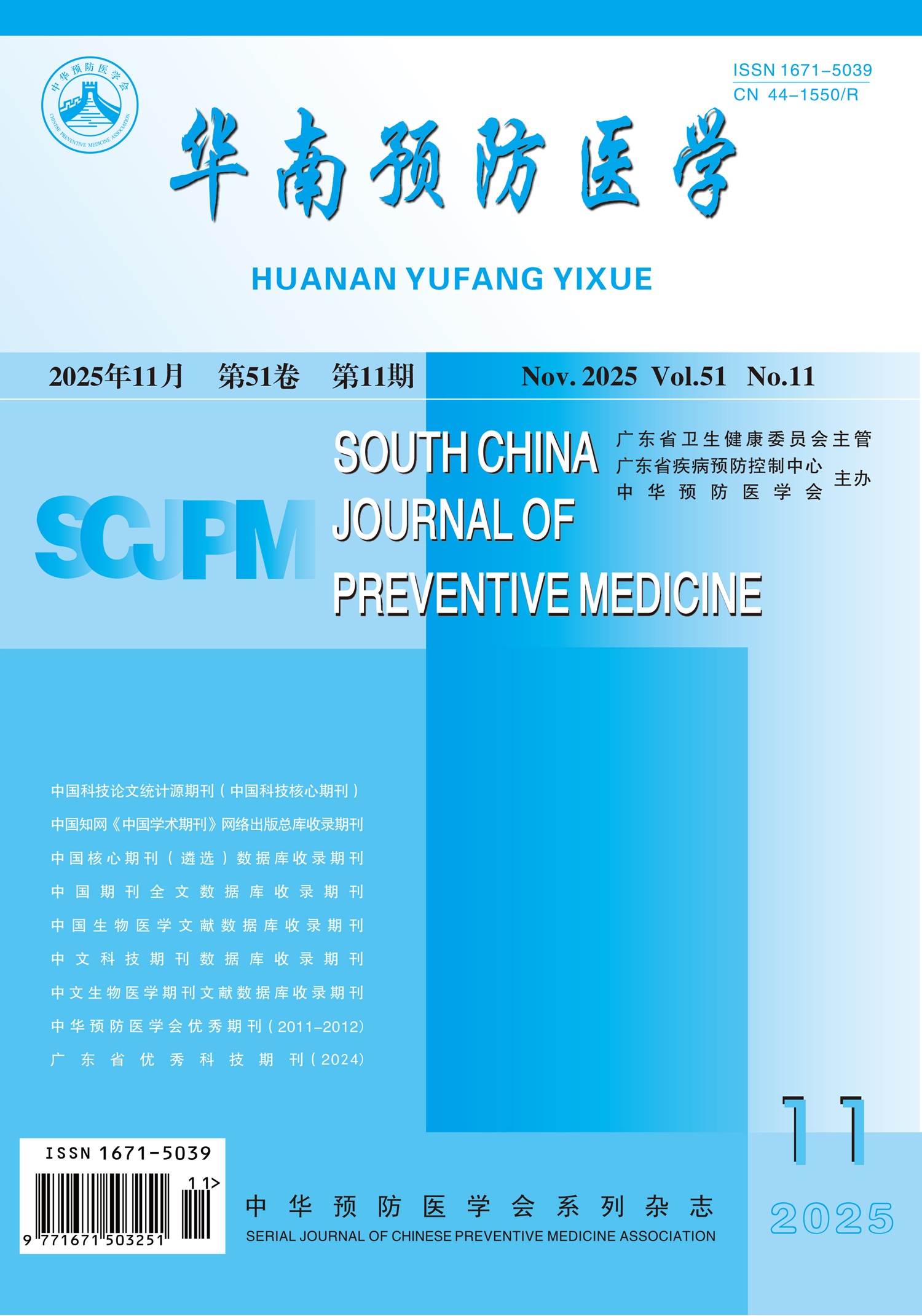The influencing factors of cognitive impairment in elderly population based on health ecological model
NIU Tongtong, HUANG Youliang, LI Ruifeng, WANG Hongyun, LIU Yamin, HUANG Qian
2025, 51(11):
1170-1175.
doi:10.12183/j.scjpm.2025.1170
 Abstract
(
48 )
Abstract
(
48 )
 PDF (1526KB)
(
33
)
References |
Related Articles |
Metrics
PDF (1526KB)
(
33
)
References |
Related Articles |
Metrics
Objective Based on the health ecological model (HEM), this study aims to explore the factors that affect cognitive impairment in the elderly, providing scientific basis for enhancing cognitive function and promoting healthy aging. Methods This study utilized data from 5 490 elderly people aged 60 and above from the China health and retirement longitudinal survey (CHARLS, 2018) . The presence of cognitive dysfunction was used as the dependent variable. Explanatory variables were incorporated based on the five dimensions of the HEM. A hierarchical multivariate logistic regression analysis was employed to evaluate the respective influence and contribution of each HEM dimension to cognitive impairment. Results The prevalence of cognitive impairment was 7.32%, with 402 affected individuals. The hierarchical multivariate logistic regression analysis revealed that at the individual characteristics level, disability was associated with increased odds of impairment (OR=1.314, 95% CI: 1.066-1.620). At the behavioral level, physical exercise was a protective factor (OR=0.669, 95% CI: 0.484-0.924). Within the interpersonal network dimension, marital status (OR=0.729, 95% CI: 0.559-0.952) and engagement in social activities (OR=0.735, 95% CI: 0.596-0.907) were associated with lower odds of impairment. At the work and life conditions level, a primary school education was associated with a higher risk (OR=1.913, 95% CI: 1.496-2.447), whereas a high school education or above was protective (OR=0.564, 95% CI: 0.345-0.922). At the policy environment level, enrollment in pension insurance (OR=0.439, 95% CI: 0.240-0.801) and medical insurance (OR=0.706, 95% CI: 0.512-0.975) were correlated with a reduced risk. The full HEM framework accounted for 41% of the variance in cognitive impairment (Pseudo R²=0.41), with the policy environment (ΔPseudo R²=0.10) and behavioral factors (ΔPseudo R²=0.08) emerging as the most significant contributors. Conclusions Determinants of cognitive impairment in older adults were identified across all five dimensions of the HEM. A holistic and multi-faceted approach, integrating comprehensive interventions at the individual, economic, environmental, and policy levels, is therefore warranted to enhance cognitive function, thereby improving the quality of life and subjective well-being of the aging population.








